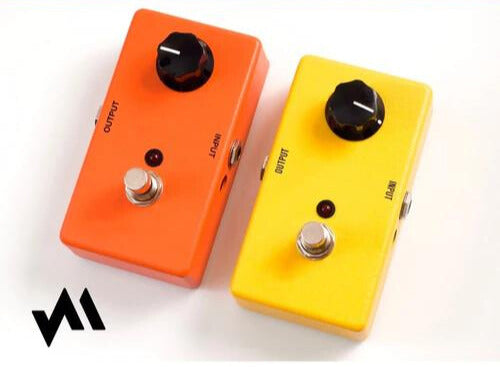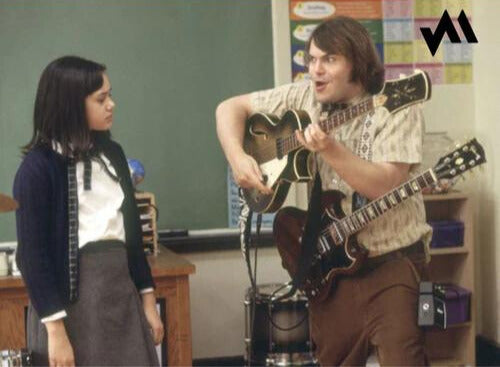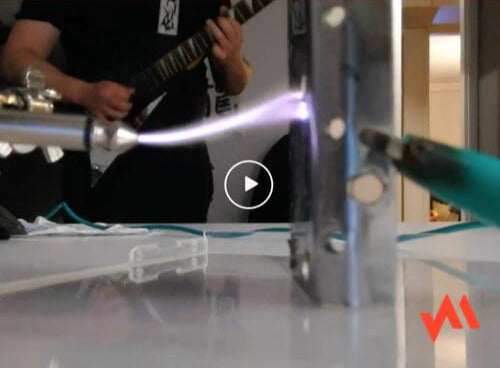The 5 Types of Guitar Effects - and where your favourite pedals fit in

Whether you opt for individual stompboxes, multi-effects units, rack-mounted or onboard guitar amp effects, a little basic knowledge can help you understand how guitar effects work, and might save you time tinkering away trying to get that perfect tone. (ok, we’ll never stop trying, but we’ll tinker more effectively?)
There are millions of different pedals out there, and probably hundreds just at your local music shop, each purporting to alter your tone in a unique way.
Most guitar effects have names that describe the sound they make (like Fuzz or Wah-wah) while others have names that describe the process of making the sound (like Phaser or Overdrive), but here we’ll try to take a scientific approach, asking “what are the properties of the sound and what are the ways they can be altered”? Or better yet, “what the heck does this pedal do?” To help you keep track of them all, we’ve organized them into a few general categories: Level, Overdrive, Filter, Modulation, and Time.
1. Level effects
These effects alter the volume, or level, of the tone’s signal. The simplest is a volume pedal, which acts just like the volume knob on your guitar, only activated by a sweeping foot motion. A boost pedal increases the level of a signal by a discrete amount when engaged, which is great if you need a volume boost for a solo.
Compression pedals will even out the consistency of the level, making loud sounds quieter and quiet sounds louder. Applied to a guitar, typically they decrease the attack and increase the sustain of notes, making it sound even and punchy. Tremolo will sweep the volume up and down in a repeating pattern, creating a shimmery, underwater-type effect.
2. Overdrive effects
Overdrive, or distortion, occurs when the input level of a signal exceeds the possible output level, or headroom, of a speaker or amplifier. Picture a sound wave squiggle, then imagine lopping off the tips of the peaks and valleys. To a sound engineer trying to mic an acoustic sound, the resulting crunch is bad, but to the guitarists seeking new frontiers of sound, this was a revelation!
What we call overdrive, distortion, and fuzz all function on this same principle, and generally the difference is in how intense the effect is. Since this effect is based on the relationship between the input and output amplitude of a signal, technically some might categorize these effects under the Level umbrella. However, they are so different - sonically speaking - from those effects listed above (and so essential to any guitarist’s arsenal) that they get their own category here.
3. Filter effects
Your electric guitar and/or amp almost certainly has at least one Tone knob, or sometimes separate knobs for High, Low, and Mid frequencies. Accentuating, or “filtering” any of these ranges of frequencies changes the tone of the guitar, making it sound “darker” or “brighter”. An Equalizer pedal (or EQ), either band or parametric, affects the tone in this way (and can also be quite useful in eliminating pesky feedback frequencies).
A Wah-wah (sometimes abbreviated to a single ‘Wah’) pedal sweeps through the range of frequencies much like a guitar’s tone knob, except foot activated. Similarly, Envelope Filter pedals apply a Wah-like sweep to each individual note played.
4. Modulation effects
This is a bit of a catch-all term that applies to lots of drastically different effects, but many of them work by affecting the pitch or sometimes speed of the note. One of the most common, the Chorus effect, operates by combining the original tone with one or more copies of itself, slightly pitch modulated to simulate the choir-like effect of several instruments playing the same note at once.
A Vibrato effect simulates the vibrato of a violin or human voice by modulating the pitch up and down smoothly. Harmonizer effects double the original tone with one pitched up or down an octave, fifth, or any interval you choose.
Flanger pedals work by adding a copy of the original sound, similar to a chorus pedal, except the copied sound is slowed down and sped up, moving in and out of sync with the original. Phaser pedals have an effect similar to Flangers, only they use a doubled tone that is moving in and out of phase with the original.
5. Time effects
The two most common effects in this category, Delay & Reverb, are both based on an “echo” effect. However, Delay effects give you discrete copies of the notes you played coming back to you at regular intervals, while Reverb simulates the wash of reflected sound you hear when you make noise in a big cathedral or similar cavernous environment. This category also includes Loop pedals, which allow you to record yourself and hear the playback immediately on loop so you can add additional parts or solos on top.
Of course, if you can get your hands on some guitar effects, the best way to learn about how they work and what they can do is to experiment! Try them in different combinations, in different orders, twiddle the knobs around and see what sound comes out. You might be one twiddle away from that perfect tone.
---
Rob McLaren is a guitarist and lover of all things stringed, you can catch him playing guitar with Union Duke or picking the banjo with his bluegrass outfit the Barrel Boys
Want the amp experience everyone is talking about? Pre-order your Jamstack 2 amp today!



